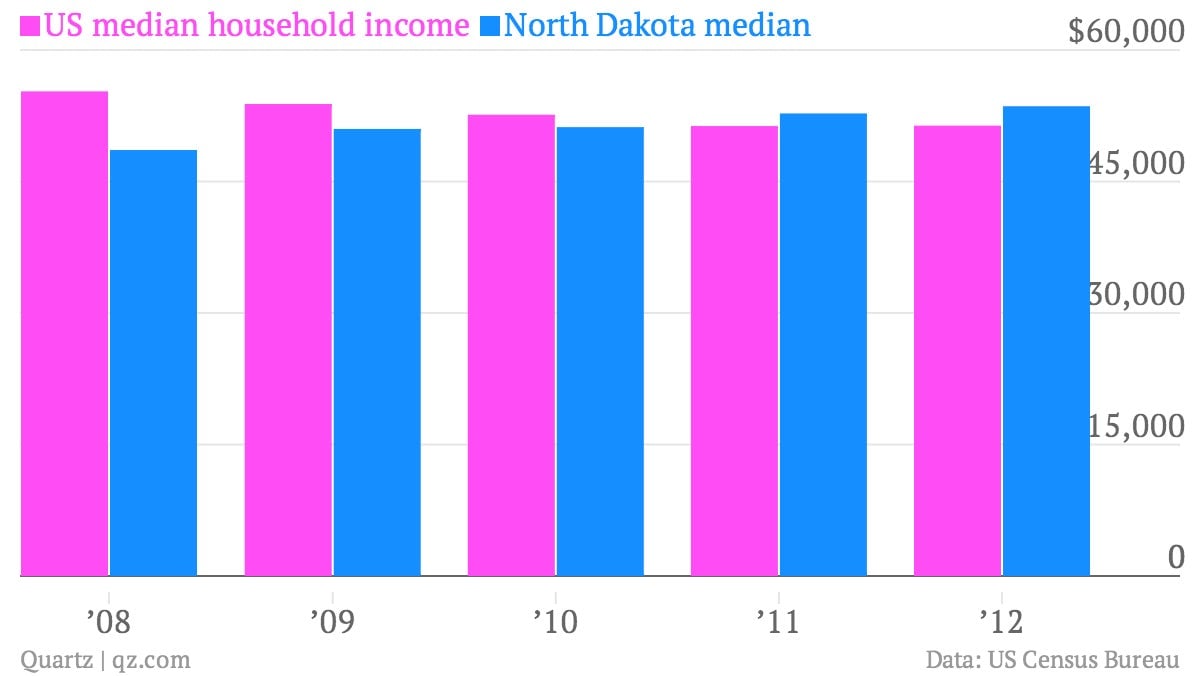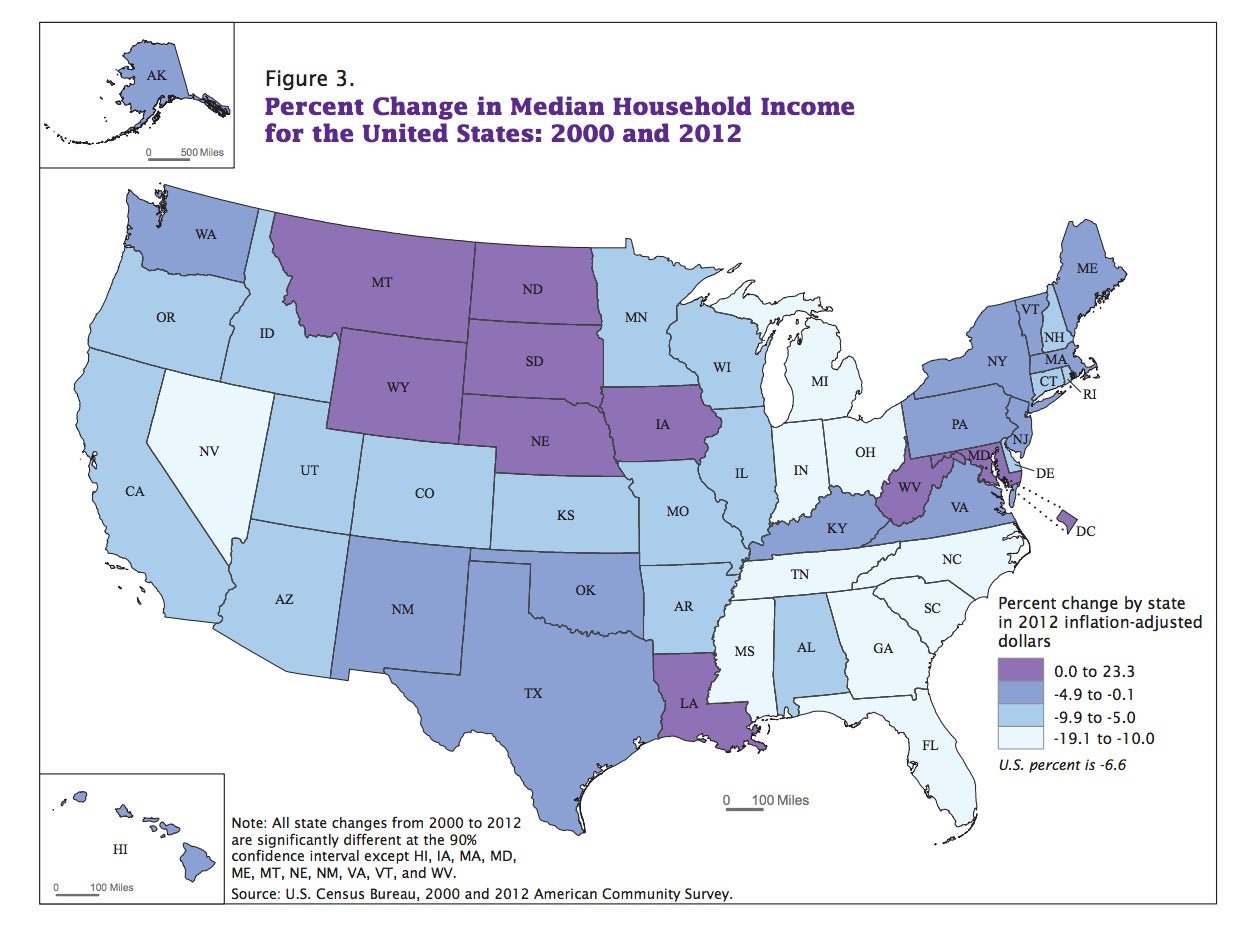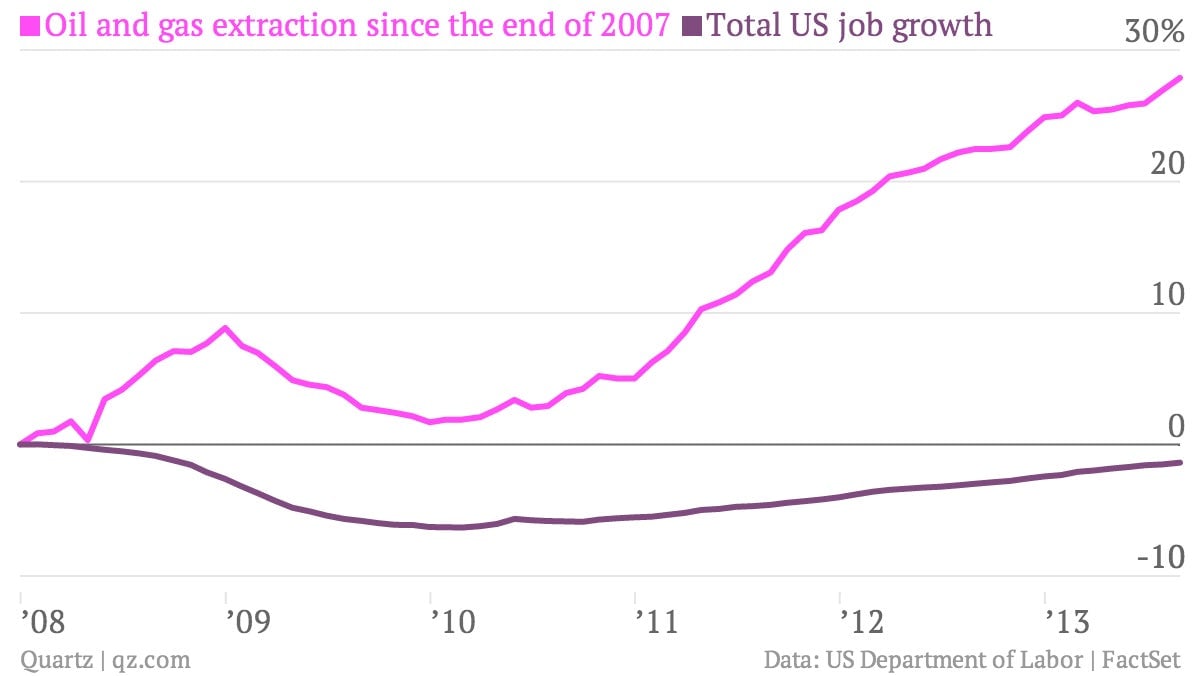Quit your job, move to North Dakota and start drilling for gas
The typical household in the heart of the US natural gas patch, North Dakota, has seen its income soar 17% between 2000 and 2012, thanks to the energy boom. Over the same period, the typical US family saw its income slump 7%. Here’s an inflation-adjusted look at how things have gone over the last few years.

- The typical household in the heart of the US natural gas patch, North Dakota, has seen its income soar 17% between 2000 and 2012, thanks to the energy boom. Over the same period, the typical US family saw its income slump 7%. Here’s an inflation-adjusted look at how things have gone over the last few years.

- And it’s not just North Dakota. Other states in the region—Wyoming, South Dakota, Montana and Nebraska—are seeing similar improvements in incomes. Also, Louisiana, a bit further south.

- There’s no secret to why this is. The job growth in the energy sector has been nuts.

This is the definition of a boom. And it’s the latest edition of a rich history of such US economic surges. Titusville in 1859. Texas in 1901. But if there’s one thing the US has learned, it’s that a gusher only lasts so long. So if you’re heading out to the gas patch, you ought to get there while the getting is good.